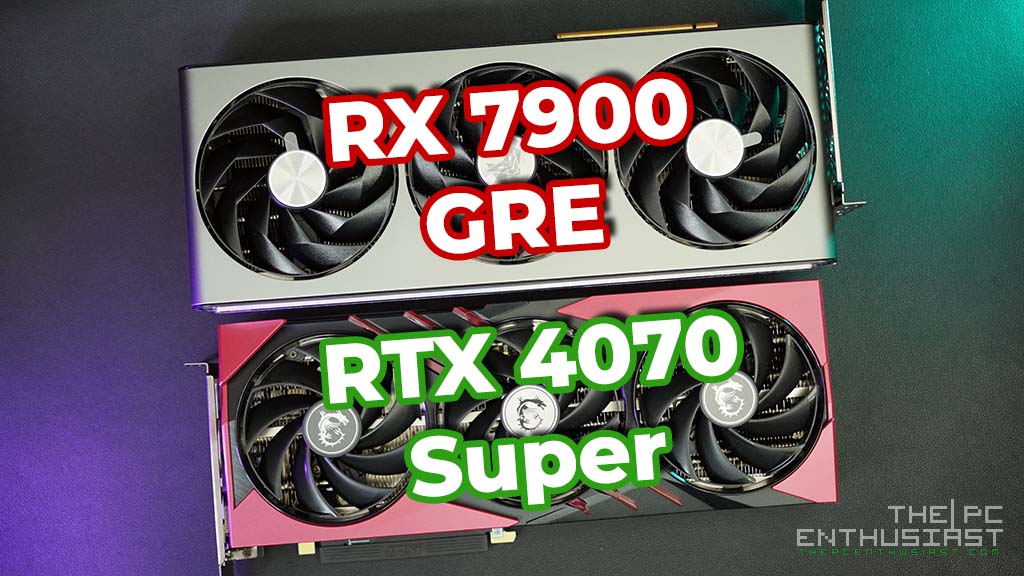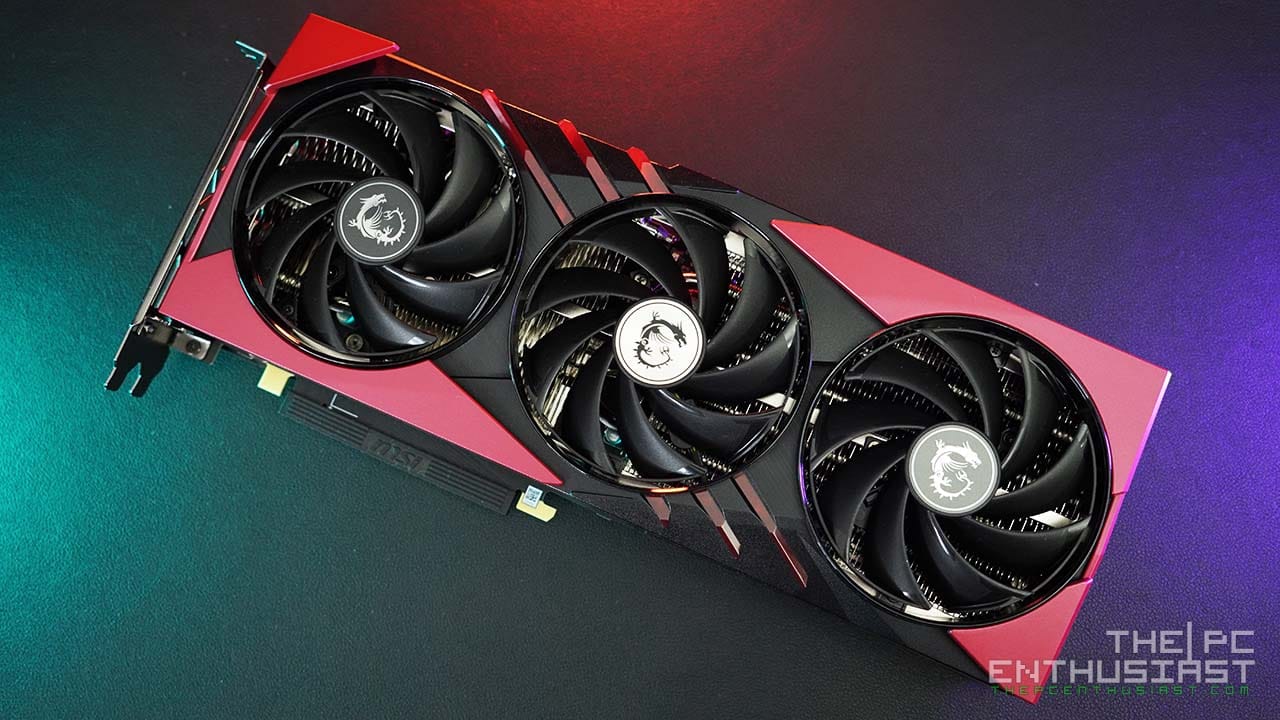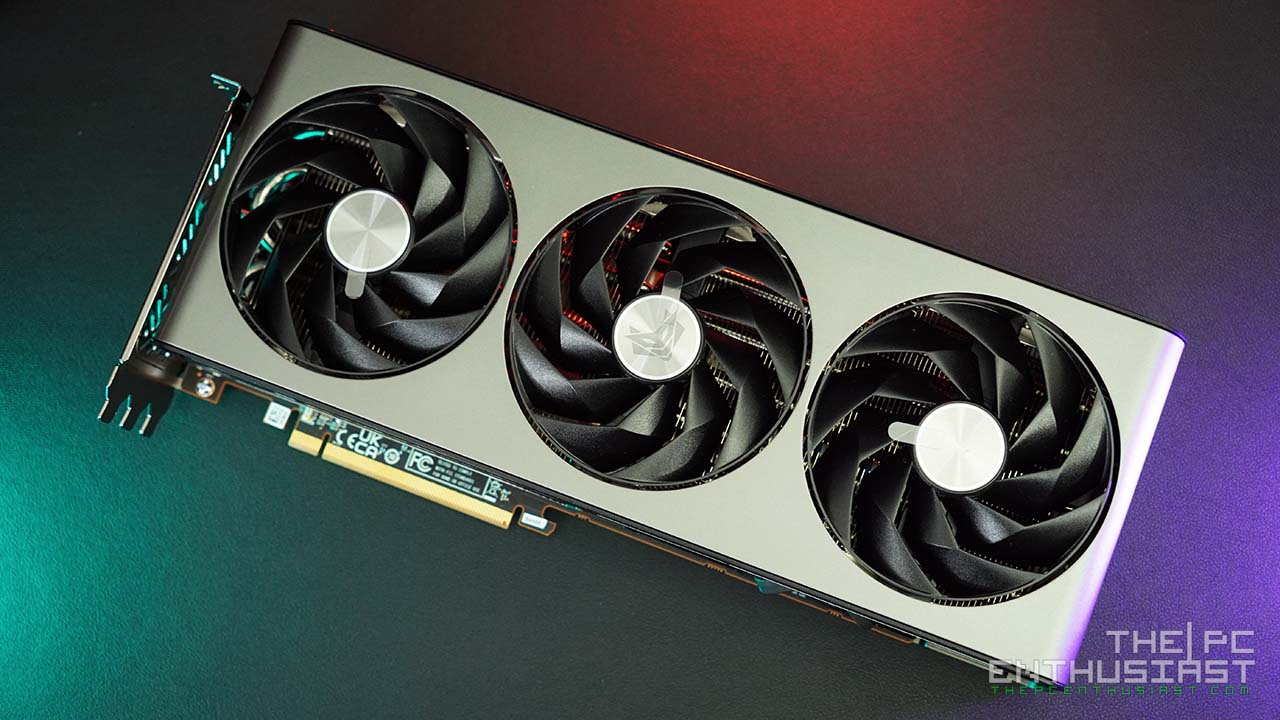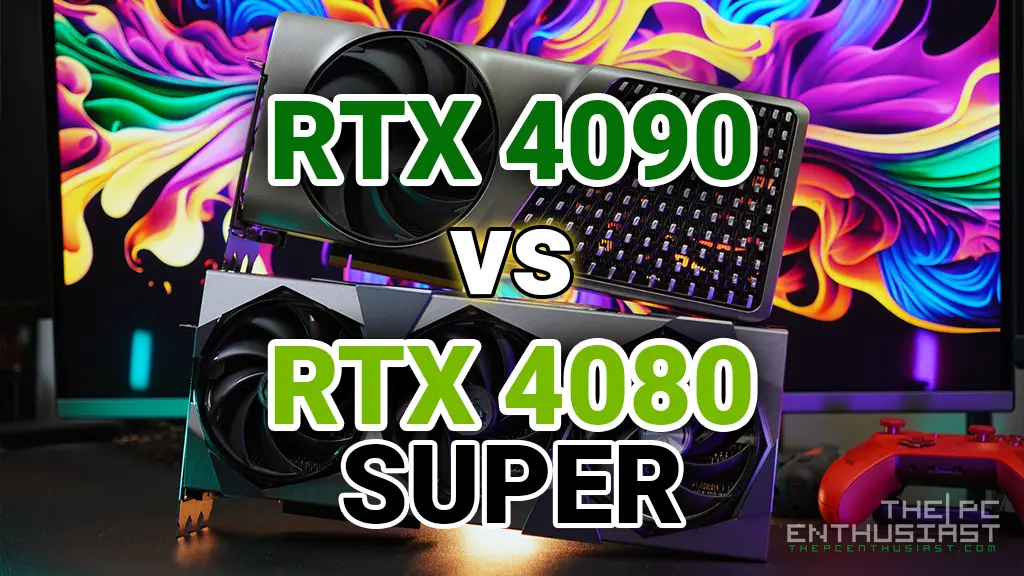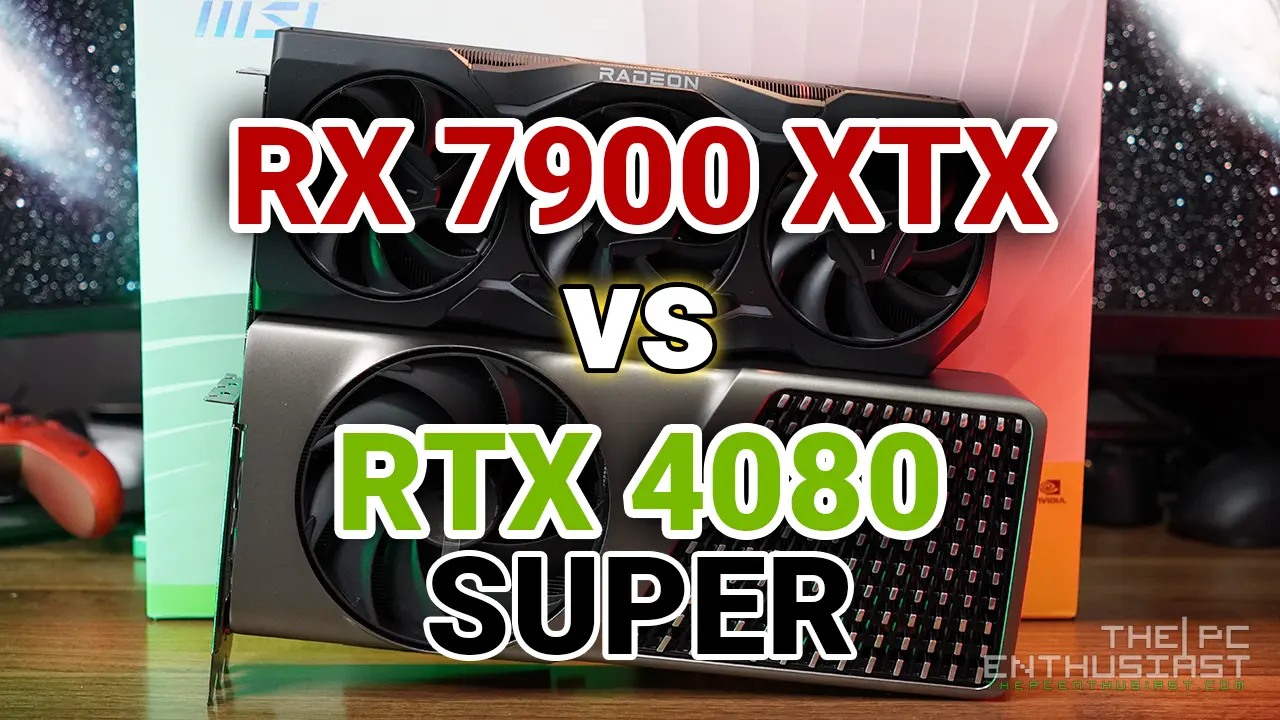We finally got our hands on a GeForce RTX 3070 Ti, one of the latest GPUs from NVIDIA released earlier this month. Today, we are going to check out and review the GALAX GeForce RTX 3070 Ti SG graphics card. The RTX 3070 Ti sits right in between the RTX 3070 and RTX 3080; and according to NVIDIA, it’s the successor of the RTX 2070 Super. This particular graphics card is also very similar to the GALAX RTX 3070 SG we reviewed before. Interestingly, GALAX’s SG series features a reference design PCB, but with a custom-designed tri-fan GPU cooler. Let’s find out how the RTX 3070 Ti performs in the form of GALAX’s SG graphics card in our review below.

GALAX GeForce RTX 3070 Ti SG Graphics Card Review
NVIDIA released two new “Ti” graphics cards a few weeks ago; the GeForce RTX 3080 Ti and RTX 3070 Ti. We were able to cover and review the GeForce RTX 3080 Ti, and you can check out our review here. As for the RTX 3070 Ti, we got the GALAX SG (Serious Gaming) graphics card for review.
The RTX 3070 Ti is NVIDIA’s successor to the previous RTX 2070 SUPER, and it is a (slightly) upgraded version of the RTX 3070. Instead of using GDDR6 memory, NVIDIA decided to pair the RTX 3070 Ti’s GPU with GDDR6X memory. It’s faster than the GDDR6, but it still has 8GB of memory in total.
In addition to a faster memory, the RTX 3070 Ti has 6144 CUDA cores; 256 more CUDA cores from the RTX 3070. The RTX 3070 Ti offers 22 TFLOPs of FP32 shader performance; while the RT cores deliver 42 TFLOPs of ray tracing performance. To top it off, it also offers 174 Tensor-TFLOPs for “AI-based” DLSS ray tracing acceleration.
Allow me to give you a brief overview of GALAX’s SG graphics card series.
GALAX’s Serious Gaming (SG) Graphics Card Series
With the release of NVIDIA’s RTX 30 series GPUs, GALAX is introducing a new series in their graphics card lineup. The new series is called Serious Gaming. First, I thought this was their higher-end model due to the word “Serious”. But this is the “cheaper”, but not inferior, graphics card variant; and usually features a reference PCB design.
Being a Serious Gaming Edition graphics card, this GALAX RTX 3070 Ti looks almost identical to the other RTX 30 SG cards we previously reviewed. The front cooler shroud is similar, including the overall design of the graphics card. But just like with the RTX 3070 SG, the capacitors at the back of the GPU are exposed.
When it comes to clock speeds, the GALAX RTX 3070 Ti SG has a boost clock speed of 1800MHZ, which is just 30MHz higher compared to NVIDIA’s RTX 3070 Ti Founders Edition’s boost clock speed. Its memory speed is 19Gbps, with a 608GB/s memory bandwidth running on a 256-bit memory interface.
Below are additional features of the RTX 3070 Ti and after that its specifications.
NVIDIA GeForce RTX 30 Series Features
- Second-gen RT Cores: New dedicated RT Cores deliver 2x the throughput of the previous generation, plus concurrent ray tracing and shading and compute, with 42 RT-TFLOPS of processing power.
- Third-gen Tensor Cores: New Tensor Core automatically identifies and removes less important DNN weights and the new hardware processes the sparse network at twice the rate of Turing – 174 Tensor-TFLOPS with sparsity.
- NVIDIA Broadcast for AI-powered Video and Voice: Turn any room into a home studio with AI – taking your live streams and video chats to the next level with AI-powered audio and video effects like noise removal, virtual background, and webcam auto frame.
- NVIDIA Reflex: Low Latency Technology: Acquire targets faster, react quicker, and increase aim precision through a revolutionary suite of new GeForce and G-SYNC technologies to optimize and measure system latency in competitive games.
- AI-Powered Video and Voice – NVIDIA Broadcast: You can now transform any room into a home broadcast studio—taking your live streams and video chats to the next level with AI-powered audio noise removal, virtual background effects, and webcam auto frame.
- NVIDIA Studio: RTX-Accelerated Content Creation: RTX 30 Series brings faster rendering and AI performance, more graphics memory, and exclusive NVIDIA AI tools such as Omniverse Machinima to help you finish creative projects in record time.
GALAX RTX 3070 Ti SG Specifications
| NVIDIA RTX 3080 FE | GALAX RTX 3070 Ti SG | NVIDIA RTX 3070 Ti FE | NVIDIA RTX 3070 FE | NVIDIA RTX 2070 SUPER | |
|---|---|---|---|---|---|
| Fab Process | 8nm FFN (Samsung) | 8nm FFN (Samsung) | 8nm FFN (Samsung) | 8nm FFN (Samsung) | 12nm FNN |
| Architecture | Ampere | Ampere | Ampere | Ampere | Turing |
| SMs | 68 | 48 | 48 | 46 | 40 |
| CUDA Cores | 8704 | 6144 | 6144 | 5888 | 2560 |
| Tensor Cores | 272 (3rd gen) | 192 (3rd gen) | 192 (3rd gen) | 184 (3rd gen) | 320 (2nd Gen) |
| RT Cores | 68 (2nd gen) | 48 (2nd gen) | 48 (2nd gen) | 46 (2nd gen) | 40 (1st Gen) |
| Texture Units | 272 | 192 | 192 | 184 | 160 |
| ROPs | 96 | 96 | 96 | 96 | 64 |
| Base Clock | 1440 MHz | 1575 MHz | 1575 MHz | 1500 MHz | 1605 MHz |
| Boost Clock | 1710 MHz | 1800 MHz | 1770 MHz | 1725 MHz | 1770 MHz |
| Memory Size | 10GB | 8GB | 8GB | 8GB | 8GB |
| Memory Type | GDDR6X | GDDR6X | GDDR6X | GDDR6 | GDDR6 |
| Memory Clock | 19 Gbps | 19 Gbps | 19 Gbps | 16 Gbps | 14 Gbps |
| Memory Bandwidth | 760.3 GB/s | 608 GB/s | 608 GB/s | 448 GB/s | 448 GB/s |
| Memory Interface | 320-bit | 256-bit | 256-bit | 256-bit | 256-bit |
| Power Connectors | 2x 8-pin | 2x 8-pin | 2x 8-pin | 8-pin | 6pin + 8-pin |
| Power Target | 320W | 290W | 290W | 220W | 215W |
| Recommended PSU | 750W | 750W | 750W | 650W | 650W |
| Price (MSRP) | 699 | ??? | 599 | 499 | 499 |
Check GeForce RTX 3070 Ti latest pricing and availability:
GeForce RTX 3070 Ti on Amazon.com here
GeForce RTX 3070 Ti on eBay.com here
Packaging and Closer Look


The retail box and packaging of the GALAX GeForce RTX 3070 Ti SG are very similar to the RTX 3070 SG’s. It has that pistachio green or sage color theme and the same character at the front portion of the box. The only difference is the word “Ti” on the label. GALAX’s packaging is nice and the graphics card is well-padded with thick foams.
Inside the box, you get a few accessories that include reading materials, the 1-clip booster fan, and an anti-sag bracket (with RGB lighting) made of acrylic. Although, I didn’t find the need to attach the bracket since the card is not that heavy and doesn’t sag at all.
The 1-Clip Booster Fan is Optional
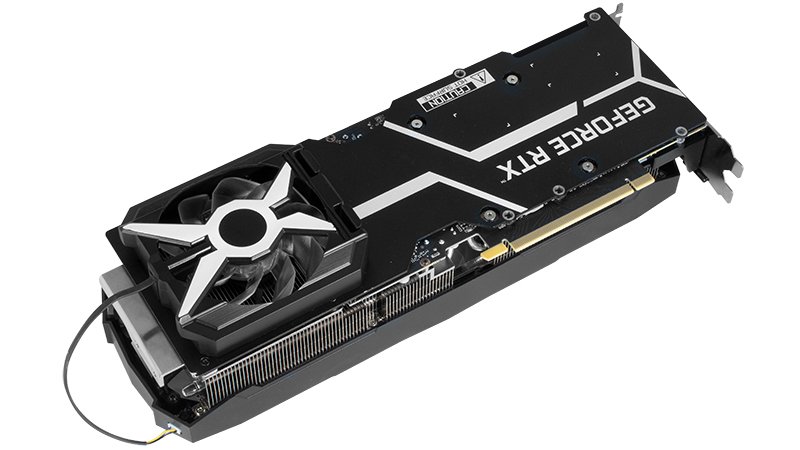

As for the 1-clip booster fan, above you can see a photo of it installed at the (top) back of the graphics card. I didn’t install it as well as it was getting in the way of the DDR4 memory. And the graphics card is already running very cool with just the tri-fan cooling solution alone.


Above are the front and back views of the GALAX RTX 3070 Ti SG graphics card, and it looks the same as the RTX 3070 SG. Even the exposed capacitors at the back are the same, or at least very similar. Three 92mm fans feature GALAX’s “Wings” fan blades design. These fans are relatively silent and perform well cooling the GPU.
The blades of each fan are also frosted since it features RGB lighting. This is one of the areas, the center of the fans, that has RGB lighting; and the “What’s Your Game?” slogan on the front-side of the graphics card.


On the output port section, there are four ports in total. It has one HDMI 2.1 and three DisplayPort 1.4a. On the opposite rear-end portion of the card, you can see two headers. One is for the clip booster fan and the other is for the anti-sag bracket since it has RGB lighting. Be careful when connecting to the headers though, as they don’t have similar pin counts.


At the front-side portion, you can see two 8-pin PCIe power connectors. The RTX 3070 SG only has one 8-pin power connector. Like most of the RTX 30 series cards in the market, they have shorter PCBs. As a result, the PCIe power connector(s) is located near the center portion of the card.
The GALAX RTX 3070 TI SG also has a substantial amount of aluminum heatsink to cool the GPU and GDDR6X memory. It’s slightly thicker than a 2-slot graphics card, and measures about 317mm x 113mm x 61mm without the bracket.
Now, let’s install this graphics card and see how it performs.
GALAX RTX 3070 Ti SG Test Setup
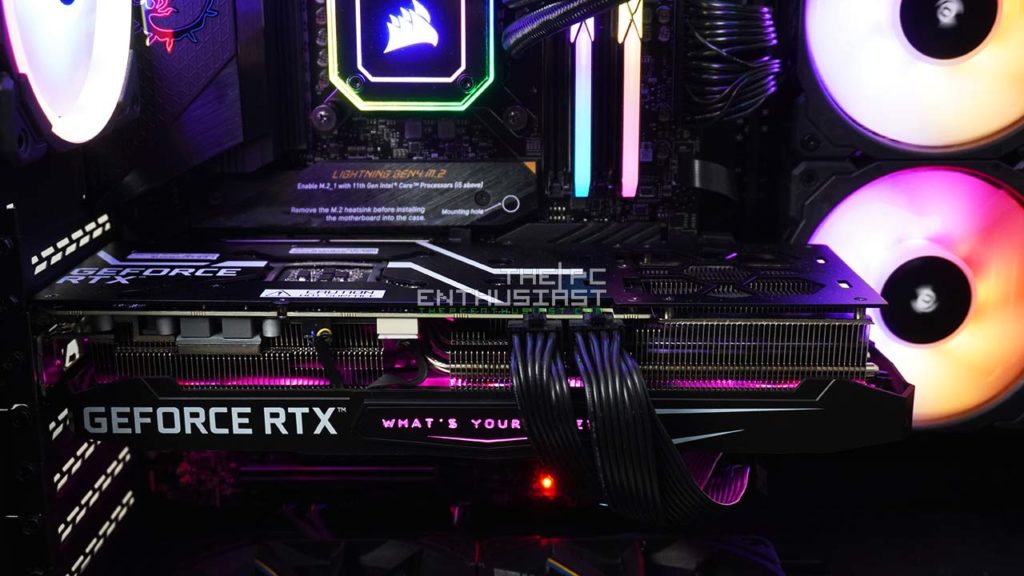
For this review, I’m using a Z590 motherboard powered with an Intel Core i7-10700K. It is paired with a DDR4-4000 memory. Below are the rest of the specifications of the system:
| Operating System | Windows 10 Pro 64bit |
| Processor | Intel Core i7-10700K (running stock) |
| Motherboard | MSI MEG Z590 ACE |
| Memory | Thermaltake Toughram XG RGB DDR4-4000 16GB |
| Graphics Card | GALAX GeForce RTX 3070 Ti SG |
| OS Drive | Crucial P5 NVMe SSD 2TB |
| Game Drive | SanDisk Extreme PRO Portable SSD V2 and Extreme Portable SSD V2 |
| Power Supply | SilverStone SX1000 Platinum SFX-L 1000W PSU |
| Chassis | Lian Li O11 Dynamic Mini |
For this test, I used the NVIDIA driver version 466.77. The graphics card was tested in three resolutions – 1920×1080 FHD, 2560×1440 WQHD, and 3840×2160 4K UHD.
For synthetic benchmarks, I used 3DMark’s benchmark suite. I also used the following games to test the graphics card: Call of Duty Cold War, Cyberpunk 2077, Deus Ex: Mankind Divided, Ghost Recon: Wildlands, Horizon Zero Dawn, Monster Hunter World, The Division 2, and Watch Dogs Legion.
Below is the GPU-Z screenshot of the GALAX GeForce RTX 3070 Ti SG.

GALAX RTX 3070 Ti SG Noise and Temperature

Similar to the other SG Series I have tested and reviewed before, the GALAX RTX 3070 Ti SG’s cooling performance doesn’t disappoint. At idle to light load, the temperatures play around 38° Celsius depending on the activity. Sometimes it hovers above 40° Celsius, but the fans are still not spinning at that point.

For the full load temperature test, I ran FurMark for almost 15 minutes. When running at full load, the temperature of the graphics card was hovering at 73° Celsius. That’s a bit hotter compared to the RTX 3070 SG’s full load temps, only ~65° Celsius. But it’s silent as expected and the fans ran at about ~60% of its speed.
Now, let’s see how this graphics card performs below.
GALAX RTX 3070 Ti SG Benchmarks
Let’s check out some synthetic benchmarks first. Some of you might not be interested in synthetic benchmarks, but others would like to see them. It also gives us an idea of the “general performance” of this graphics card.
For the synthetic benchmark results, I used 3DMark’s graphics benchmark tests. On the left-hand side are graphics scores, while on the right-hand side are the average frames per second (FPS). Below are the results I got for the GALAX RTX 3070 Ti SG:
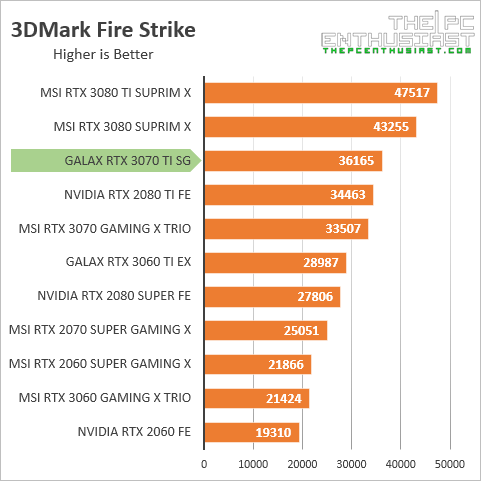





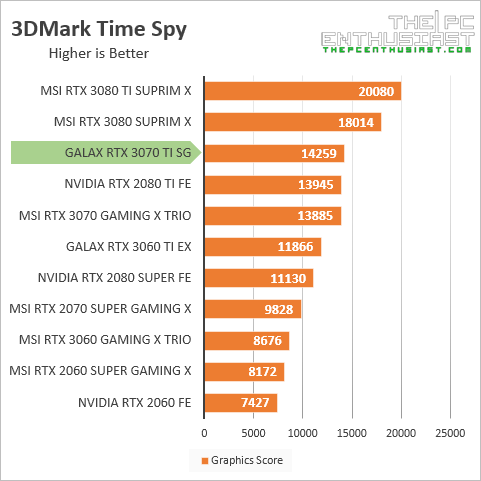
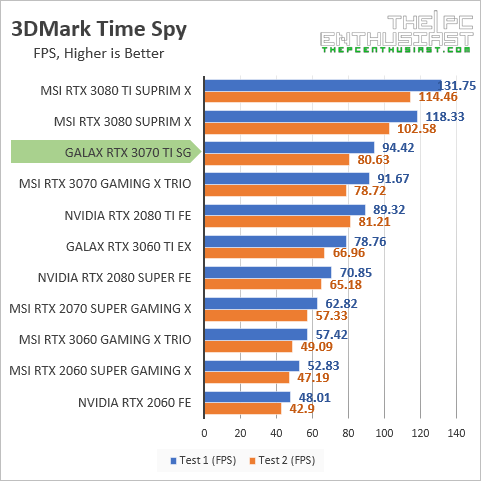




As expected, the RTX 3070 Ti sits right in between the RTX 3070 and RTX 3080 GPUs. It also performs a bit better than the RTX 2080 Ti; and you can see a substantial performance improvement from its predecessor, the RTX 2070 Super. However, its performance is a bit closer to the RTX 3070, rather than sitting in the middle or closer to the RTX 3080.
1080p Game Benchmark Results
The GeForce RTX 3070 Ti is probably not the best GPU for 1080p. But considering that some games are graphics-intensive, it could be an option. Generally speaking, it is designed for higher resolution, WQHD (high refresh rate) preferably. But let’s see what frame rates can we get with the RTX 3070 Ti in 1080p resolution. Below are the results:







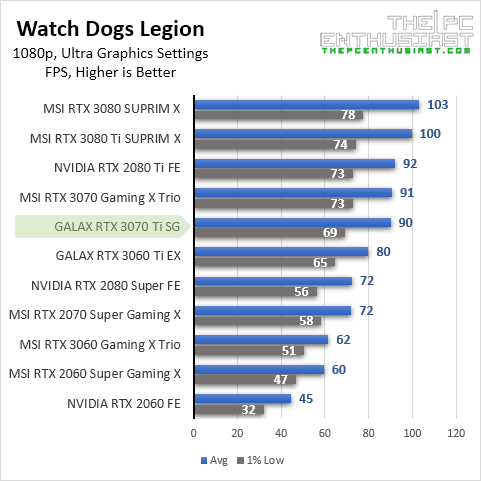
Like in the synthetic benchmarks, the RTX 3070 Ti performs somewhere in between an RTX 3070 and RTX 3080. However, I’m not sure why it performed a bit slower than the RTX 3070 on Watch Dogs Legion. Perhaps it was bottlenecked by the resolution? Not sure, but the results were very similar after running the benchmark a couple of times more.
1440p Game Benchmark Results
At 2560×1440, I expect to see the RTX 3070 Ti performing well without being bottlenecked by the resolution. But, I’m positive that it would still sit in between an RTX 3080 and RTX 3070. So, let’s check out the results I got in this resolution.

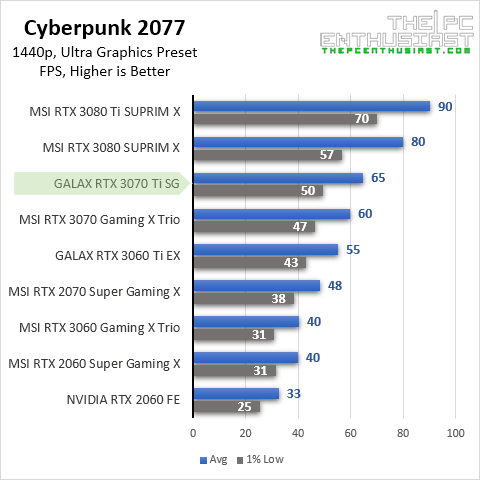






As expected, we see the RTX 3070 Ti’s performance sitting in between the RTX 3080 and RTX 3070. And similar to what I got in the synthetic benchmarks, it seems that the RTX 3070 Ti is a bit closer to the RTX 3070’s performance in most cases. It looks like there’s an (obvious) gap between the RTX 3080 and RTX 3070 Ti as well.
2160p Game Benchmarks Results
Just like RTX 3070, I wouldn’t recommend the RTX 3070 Ti for 4K gaming. I think this graphics card is best suited for 1440p (high refresh rate) gaming. The RTX 3080 and RTX 3080 Ti will do a better job at 4K gaming. Nevertheless, by adjusting the graphics settings, you can still get playable frame rates with an RTX 3070 Ti graphics card at 4k resolution.








We see similar results and patterns where the RTX 3070 Ti sits in between the RTX 3070 and RTX 3080. But generally speaking, its performance is somewhat closer to an RTX 3070, rather than an RTX 3080.
Okay, let’s wrap up this review…
Price and Availability
The GeForce RTX 3070 Ti starts at $599, that’s NVIDIA’s suggested retail price. But, you most probably know by now that the prices of these graphics cards are insanely high. Availability is a bit “better” now compared to these past few weeks. And they are (generally) “on stock”, but the prices are still very high. I did a quick search, and it seems an RTX 3070 Ti is being sold for around $1,100 to $1,400++.
I expect that the pricing will be better, hopefully soon, as more units will be released in the market. Hopefully, NVIDIA can quickly produce more GPUs once the silicone shortage comes to an end. For the latest pricing and availability, you can check out the link(s) below.
Check GeForce RTX 3070 Ti latest pricing and availability:
GeForce RTX 3070 Ti on Amazon.com here
GeForce RTX 3070 Ti on eBay.com here
GALAX GeForce RTX 3070 Ti SG Review Conclusion

One of the questions that people will likely ask is whether the RTX 3070Ti is worth it or not. It’s difficult to conclude on something especially when the correct or true MSRP is not being followed (at the moment). If we use NVIDIA’s MSRP, there’s only a $100 price difference between an RTX 3070 and RTX 3070 Ti; and RTX 3070 Ti to RTX 3080. I guess the RTX 3080 would be the more attractive GPU if you have the budget. But for those who are using a 1080p or 1440 gaming monitor, the RTX 3070 isn’t a bad choice either.
The Percentage Difference
Based on the results I got, at 1920×1080 the RTX 3080 is only 4% faster than the RTX 3070 Ti. And the RTX 3070 Ti is 9% faster than the RTX 3070. This is because the RTX 3080 is being bottlenecked by the 1080p resolution. I do not recommend that you buy an RTX 3080 if you only use a 1080p gaming monitor.
At 2560×1440, the RTX 3080 is around 19% faster than the RTX 3070 Ti. And the RTX 3070 Ti is just around 7% faster than the RTX 3070 on average. That’s just a small performance increase for a lot more in price. Finally, at 4K resolution, the RTX 3080 is 27% faster than the RTX 3070 Ti; and the RTX 3070 Ti is 10% faster than the RTX 3070 on average.
Honestly, in my opinion, when it comes to performance the RTX 3070 Ti isn’t a bad GPU. The only problem here is its pricing and the actual and current pricing today, or at the time you have read this review. Not to mention, the availability as well. Right now, the RTX 3080 is very expensive and it seems that the price difference between an RTX 3070 Ti and RTX 3070 varies a lot.
When I checked Amazon and eBay prices, there are RTX 3070 graphics cards that are priced higher than an RTX 3070 Ti. So, if ever you spot an RTX 3070 Ti, or any graphics card, at a reasonable price or close to NVIDIA’s MSRP, you might want to consider that. At this point, the price will be the major deciding factor. Since any graphics card for a good price is a good graphics card.
Are GALAX’s SG Graphics Card A Good Choice?
Based on my experience with GALAX’s graphics cards, they are generally of great quality and they perform well, or as expected. The fans are relatively silent and do a great job at cooling the GPU and VRAM. If you don’t have any issue with the design or aesthetics, then yes, GALAX cards are solid. But I think they should do something with the “what’s your game?” logo/branding since it could be a deal-breaker for some.
Finally…
At the end of the day, if you can find an RTX 3070 Ti for a reasonable price then go for it. Performance isn’t really the issue here, it’s the price and availability.


